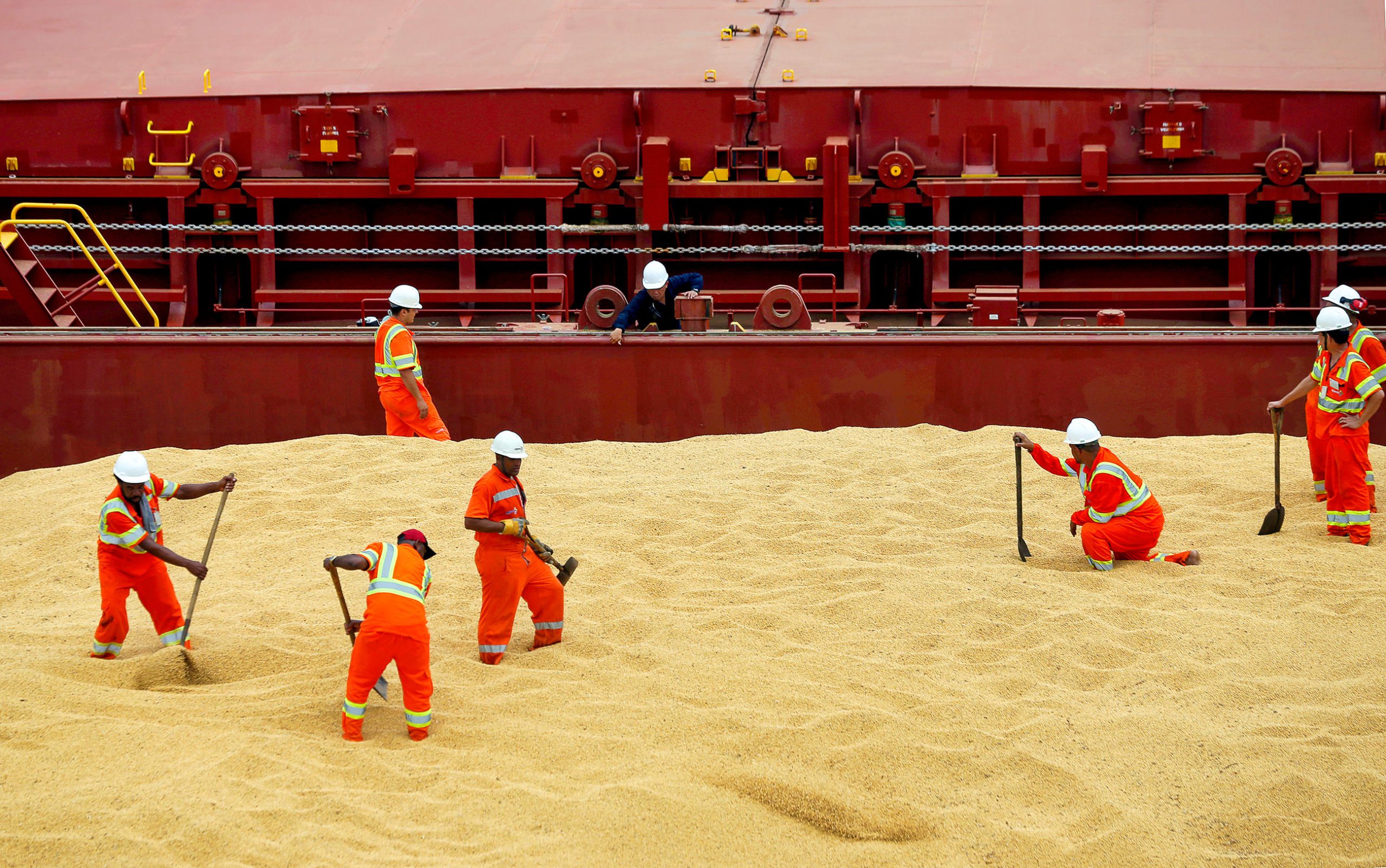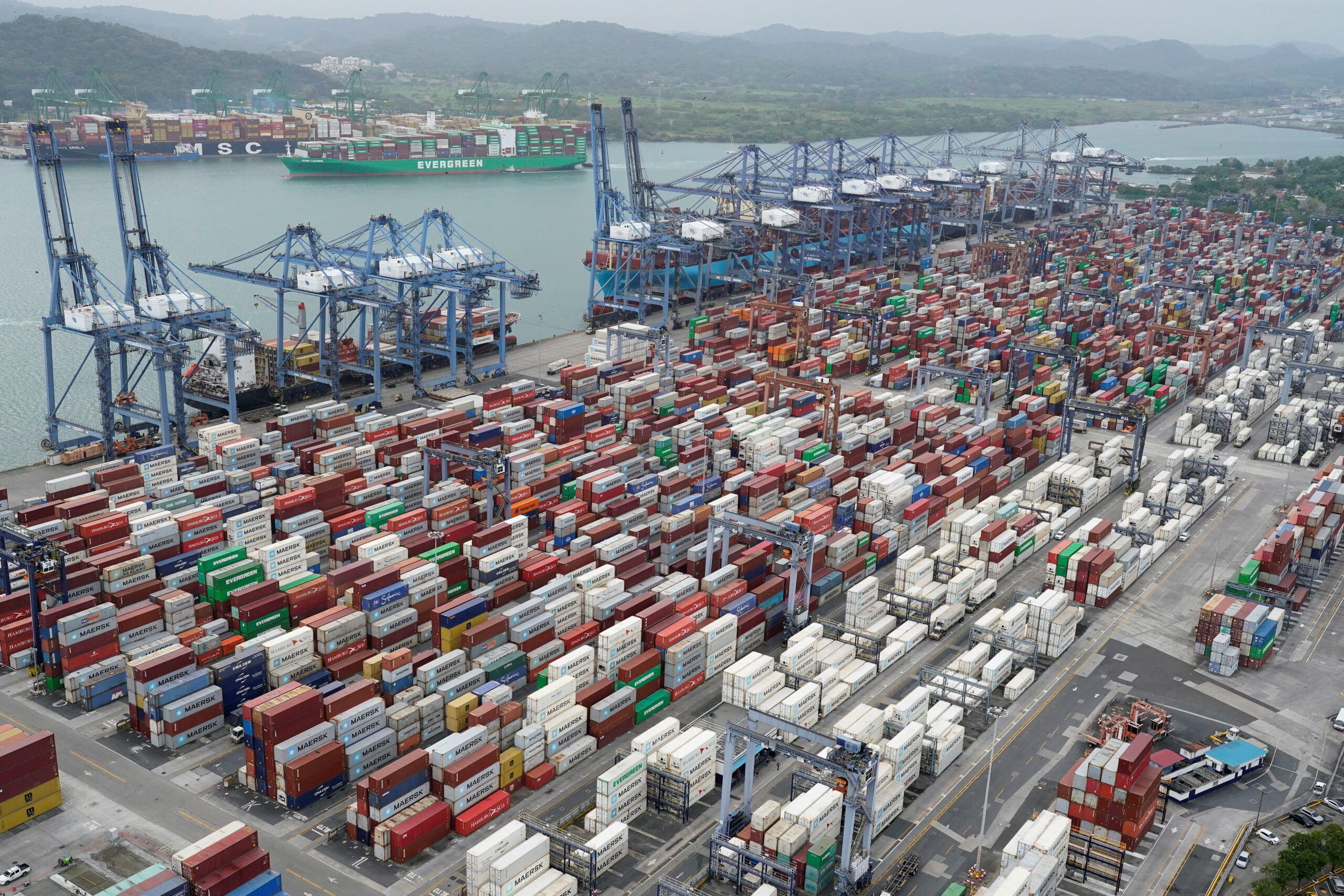By Hugh Bronstein and Maximilian Heath (Reuters) – Argentine soy and corn harvesting is being driven by ideal weather conditions but the lack of rain that is helping farmers bring in crops is also contributing to the shallowness of the Parana River, which has begun to dent agricultural exports.
Lack of navigability on the river, which carries about 80% of Argentine grain exports, is “an underestimated problem” for exporters, German Heinzenknecht, a meteorologist at consultancy Applied Climatology, said on Thursday.
The South American grains powerhouse is the world’s No. 3 corn supplier and top exporter of soymeal livestock feed, used to fatten hogs and poultry from Europe to Southeast Asia.
“The weather is excellent for advancing the harvest. We expect some rains next week in the eastern farm belt, but nothing that would slow the harvest,” he said.
The Buenos Aires exchange forecasts a 2020/21 soy crop of 43 million tonnes, but that could increase thanks to better than expected yields in Cordoba and Santa Fe provinces, it said. The exchange forecasts a corn harvest of 46 million tonnes.
The soy harvest progressed by more than 20 percentage points over the last week to cover 53% of planted area, according to the exchange, and the corn harvest was nearly 23% completed.
“But the situation on the river is very serious and not expected to get better until late in the year. So navigability on the waterway will worsen,” Heinzenknecht said.
Ships are loading 5,500-7,000 tonnes less due to low water levels, Guillermo Wade, head of the CAPyM Chamber of Port and Maritime Activities said this week.
The level of the Parana at the export hub of Rosario, home to some of the biggest soy-crushing plants in the world, was a scant 1 meter (40 inches) on Thursday, according to the Coast Guard.
Between 1996 and 2020, the median depth of the river at Rosario was 3.58 meters at this time of year.
The measurement is based on a scale used by ship captains that does not reflect the actual depth of the waterway. Indeed the Parana is usually dredged to about 34 feet (10 m) at Rosario, although Wade said the current lack of water is decreasing that depth by two to three feet.
The main driver of shallowness is dry weather in Brazil, where the waterway starts. In Argentina, the Pampas farm belt will stay mostly dry with temperatures above normal over the days ahead, the Buenos Aires Grains Exchange said in a report on Thursday.
Some storms are expected next week, it said, but for the May 13-19 period, the exchange said it is not expecting significant rain on the Pampas farm belt. Dry weather helps farmers bring in their crops by allowing multi-tonne harvesting machines to move quickly, rather than getting stuck in the mud. (Reporting by Hugh Bronstein and Maximilian Heath Editing by Marguerita Choy Editing by Mark Heinrich)

 Join The Club
Join The Club











